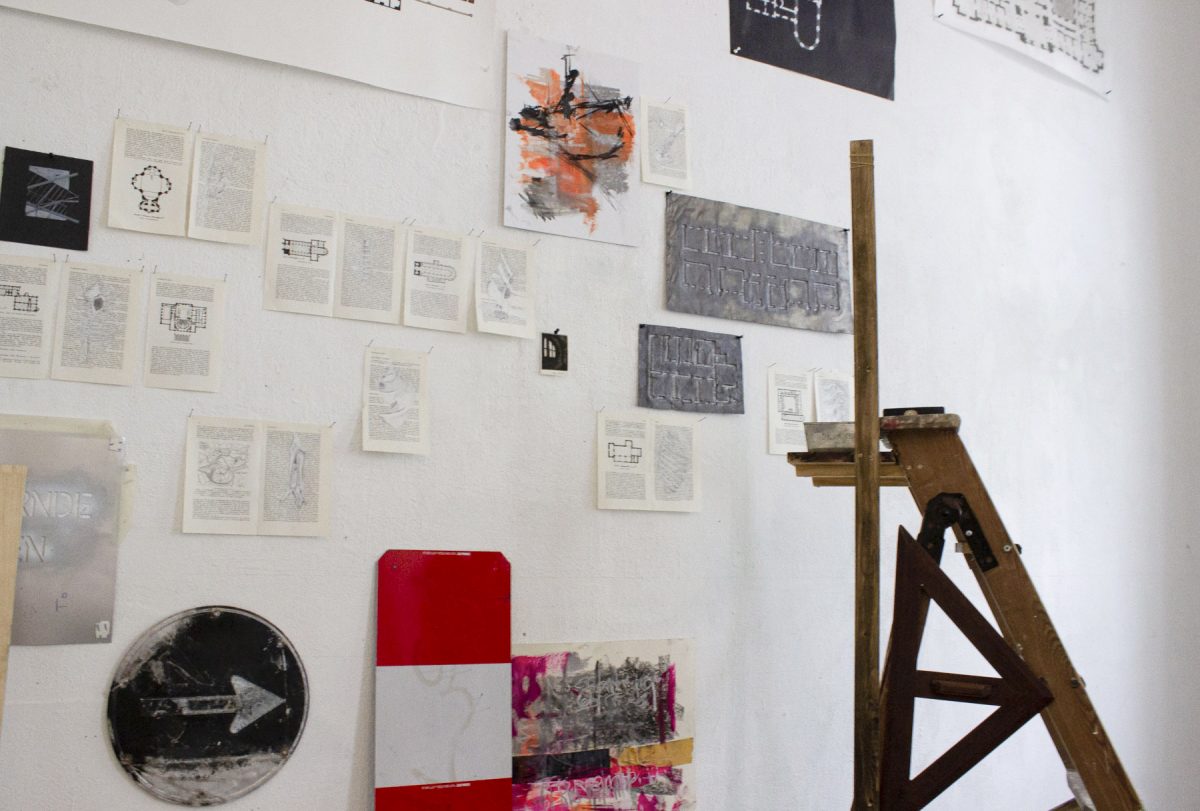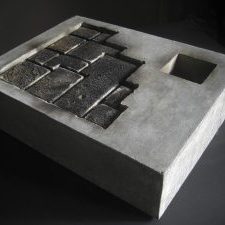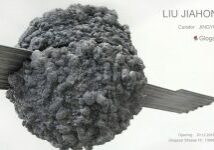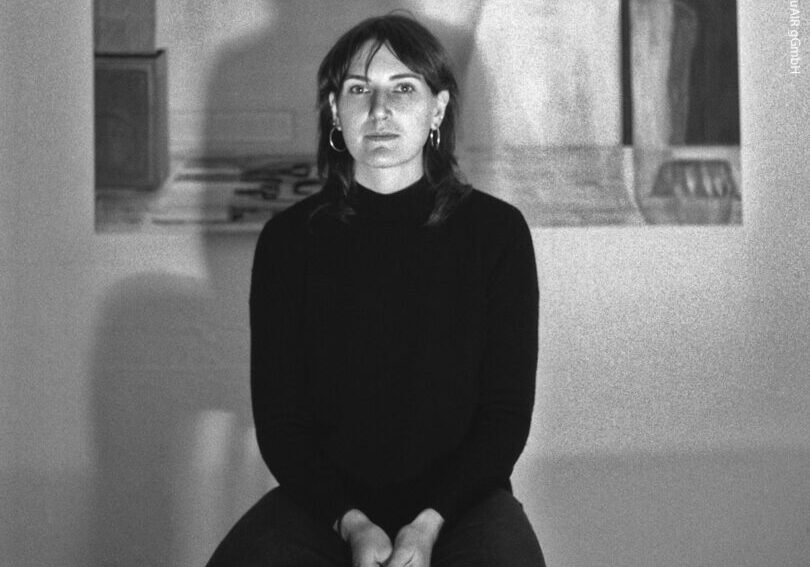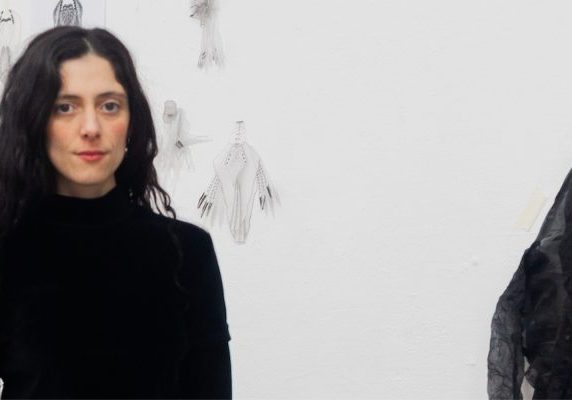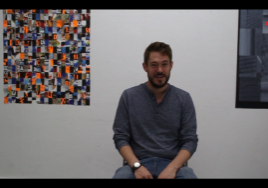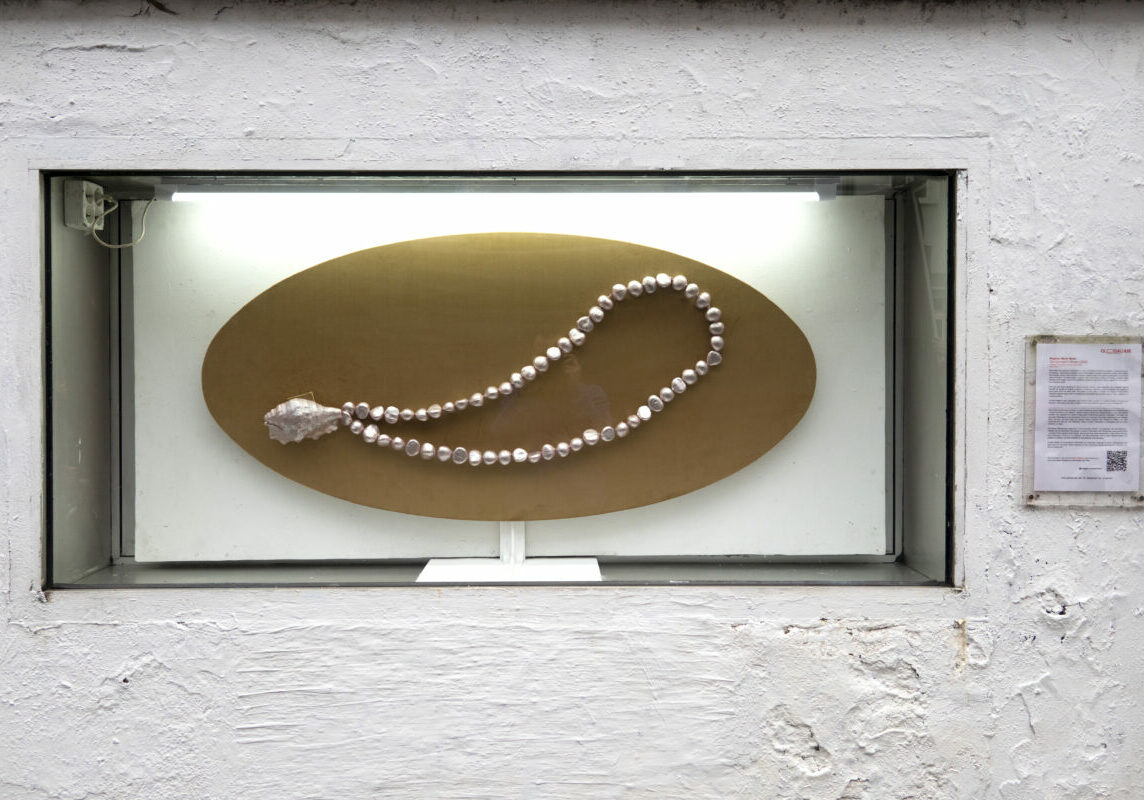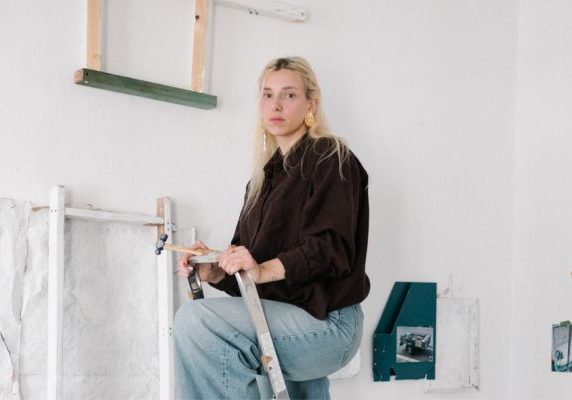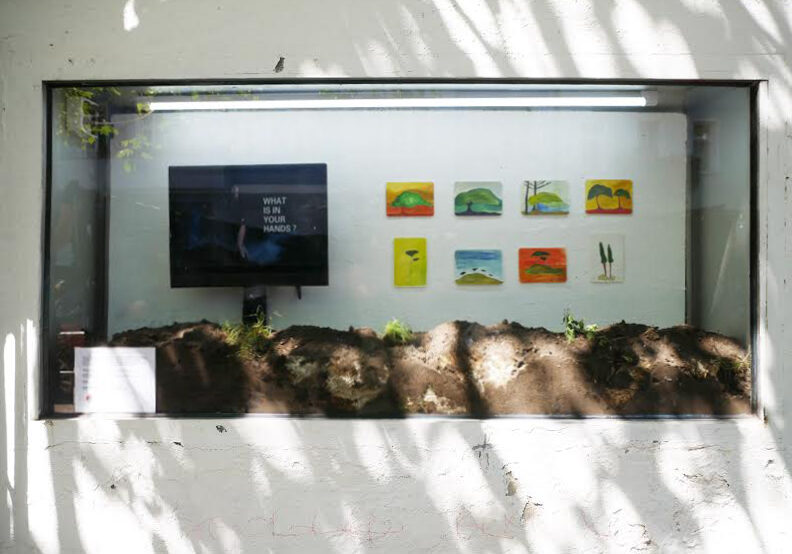Meet the Artist // Marcos Kaiser Mori
Marcos Kaiser’s artistic journey was shaped by a diverse range of experiences, from musical instrument making to mechanics and metalwork. His process involves mapping and studying subjects, creating sculptures and installations that engage with their environment in contrasting ways. Kaiser continuously reworks his pieces, exploring the boundaries of his artistic expression.
Can you give us an introduction about yourself and tell us about your background? How did you come to art? Do you have any memorable anecdotes that had an impact on your career?
My name is Marcos, I’m a sculptor, but I started in a completely different way. I was studying mechanics in high school and then I got a job in a hardware factory. There they also made the flutes. So I got really hooked into making instruments and working with wood. Later I joined the music school in the course of composition and at that time I was playing cello and lute. But then at the music school nothing really worked, it was not like a real university, it was like a conservatory. Just next to me there was the art school, which was much more fun, much more interesting. Everything happened and I could see from the window. In the music school, we had our cubicles to practice music for six hours a day and it was very small and next door people were doing really interesting things.
So, I did the exams for the university again and joined the sculpture course and at the art school I could develop both things, instrument making and studying music and also sculpture. It really worked as a university, everything crossed, all the knowledge. It was illuminating.
How did you move from sculpture to drawing and what are you doing now here in the residency?
It happened in GlogauAIR. The place was so inspiring that I couldn’t create something that I brought from outside. I have had many ideas in Brazil for my work, but they didn’t fit in here.
The building had some power and for my projects here I got inspired by the building and the ideas came completely different.
I’m not a person who draws normally, my hand is not so good, it’s really precise and fast and I am not even sure of what I am doing. But I draw images that come from the building and also books that inspire me. For example, I drew this blackboard when I was reading about Tadeusz Kantor’s theater and they had a play with all the themes that interest me in sculpture which are time, a kind of decaying time, and even the things that are not there anymore. Time acts and things disappear, but I like this process which is very difficult to capture in any language because it’s dynamic and we work with static things. It’s a problem of language that even a lot of poets had. For example, Mallarmé was completely puzzled by this impossibility of language to deal with what he wanted, so he changed the language.
Anyway, reading this I felt like producing drawings the first time I was here in 2020 and, for what concerns this second time, this blackboard I did in 2020 was in the basement. Seeing this work again was powerful to me because I usually erase everything, but this time I couldn’t. It was kept for four years in the basement and I was thinking about erasing it, but then I didn’t, I still haven’t and it stayed forever.
So, I started working with different things also related to buildings, but this time I dealt with a book about a school, a very curious one by Robert Walser. It’s funny because also the chalk image from 2020 is quite good for this theme: it’s a bit hazy, it’s like the scene is set in a dream, the student’s don’t really know what is happening, the time is dilated and you cannot find any purpose in your life. I started to think more about the school and empty buildings in general. I started to think that you can get lost in the building because it forgets about some parts, if you don’t use them. I was trying to navigate the map of the school and study the architect who made a lot of things in Germany, in Berlin. He was studying the floor plans of his buildings and associating them with other images that came up in his mind.
My work is research-based, so I took some time to study and write, but then I got tired of writing and I felt like just producing and exploring things and enjoying Berlin.
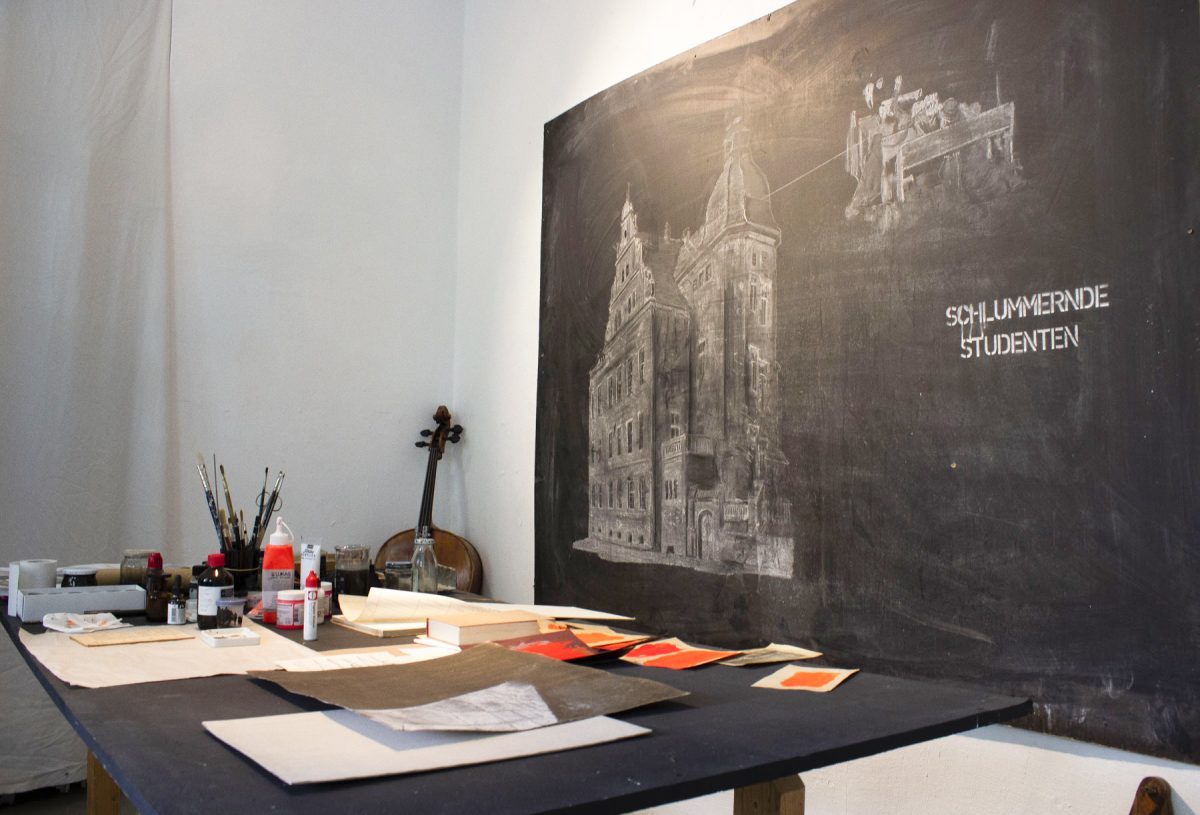
What about the topic of memory in your works?
Memory is quite valuable, but the funny thing is that we lose it every time. When you lose your memories, you can’t recover them. I also play with this thing that is something that hurts. It is difficult to let go, but if you think about it when people die, their memories are gone, and then what can you do? So, memory is valuable, but we lose it so easily. And I am interested in that.
What is your relationship with the art world and the art market? What do you think about it?
It’s very bad. We don’t like each other. It’s super complicated, and it takes a really talented person to navigate that and I feel like I’m completely out of the market targets right now.
For example, I’ve been to the Venice Biennale. I was irritated by the amount of times that people wrote “decolonize”. I hate this word already, even though I’m from a place which fights for decolonizing everything. I understand the fight and the logic of it, but I don’t agree with the way people – especially curators – use this word, the way they feel obliged to do this. Sometimes people don’t even care about this, but the market asks for it, and so every curator now needs to decolonize things. It’s boring.
Unless you’re a painter and you have objects that sell easily, other things really involve too much networking. I’m bad at networking.
What are your goals for your art? What do you think when you are making your artworks?
I think about all that matters to me in a different way, and then I get new ideas from that. Afterwards, I need to act on these ideas because I’m hooked on the pleasure of thinking about these questions that pop into my mind. Moreover, I like objects and techniques and craftsmanship.
I would also like to show my works to more people and share my thoughts, but then again it involves all that networking.
As you already told us, you did a residency here at GlogauAIR back in 2020 during the pandemic. Do you find some differences now? Why did you join again? What do you think about Berlin?
It’s really bad to say this, but for me the pandemic was such a great time. Nature was kind of healing, but it was empty and it was forbidden to meet more than three people at the same time. This building seemed like a haunted building.
I came here again because I thought that the inspiration would come again, and it did. I also needed three months to write and study. I think being in the residency is very productive and interesting.
Berlin is kind of sad. I came here in 2007, 2011, 2016, 2020 and now, in 2024 and it has become so boring and so destroyed.
What plans do you have after the residency?
I need to go home and make a lot of instruments because I have many orders piled up.
Then I think I will use these ideas I got here to produce more things. It already happened to me with the ideas I brought from 2020 as they generated so many things later. I hope the same thing will happen again.
